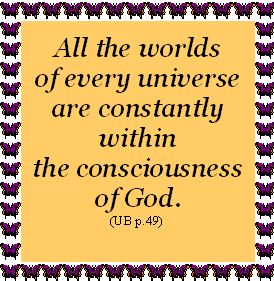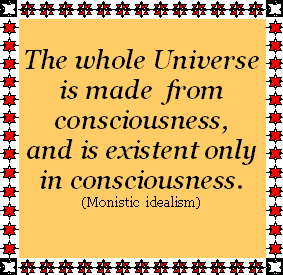|
Reconciling Realism and Idealism
In what appeared to have been an absurd idea, philosophers Gottfried Leibniz and Bertrand Russell both suggested that the views of realists and idealists can be reconciled if each of us has two heads. Empirical objects, the ordinary objects of our daily lives, would lie outside our "Small Head" to be used or experimented with. But simultaneously these same objects would be theoretical ideas inside of our "Big Head"--which also embraces our "Small Head"--and thus itself becomes an object of empirical scrutiny.
In reality, this "Big Head" does not have to be ours alone, but can be composed of all such Heads. And since this one super Head would hold all of reality within it, we could all be sharing the one "Big Head."
This concept provides us with two ways of sharing reality. One aspect, all of our small Heads, is "local"--it is within the confines of Einsteinian space-time with accessibility limited by the speed of light. But Big Head is non-local, instantaneously accessible, and encompasses the experiences of every empirical object, including our Small Heads, our empirical brains.
Given the existence of both local and non-local aspects of mind, the latter being an organizing principle connecting with brain-mind and local and non-local consciousness, both idealism and realism can be valid--for if brain-mind is an object in a non-local consciousness that encompasses all reality, then what materialists nominate as objective empirical reality is also within this same consciousness.
But why is there so much consensus about an apparently material, determinist objective world that looks to be so permanent? If it is true that the moon is there only when we look at it--as most quantum physicists will assert--why does that moon appear to be so real, so permanent?
Firstly, even the smallest of classical objects, relative to quantum objects, have enormous masses--which means their quantum probability waves spread only very slowly. Such slow spreading makes the trajectory of their approximate center of mass highly predictable. Thus, whenever we look at the moon, we find it where we expect it. Furthermore the complexity of macro bodies translates into a very long regeneration time for their wave function--which induces us to look at them in causal terms.
In the non-local universal consciousness all phenomena, even so-called classical empirical objects, are simply objects in consciousness.
The world, the whole universe, is made of consciousness and is existent only in consciousness. That is a lesson of quantum physics and its differentiation of locality and non-locality.
With idealist science we have arrived at a science that excludes neither the subjective nor the objective, neither spirit nor matter--and thus is able to resolve the deep schisms of our thought.
|
|





